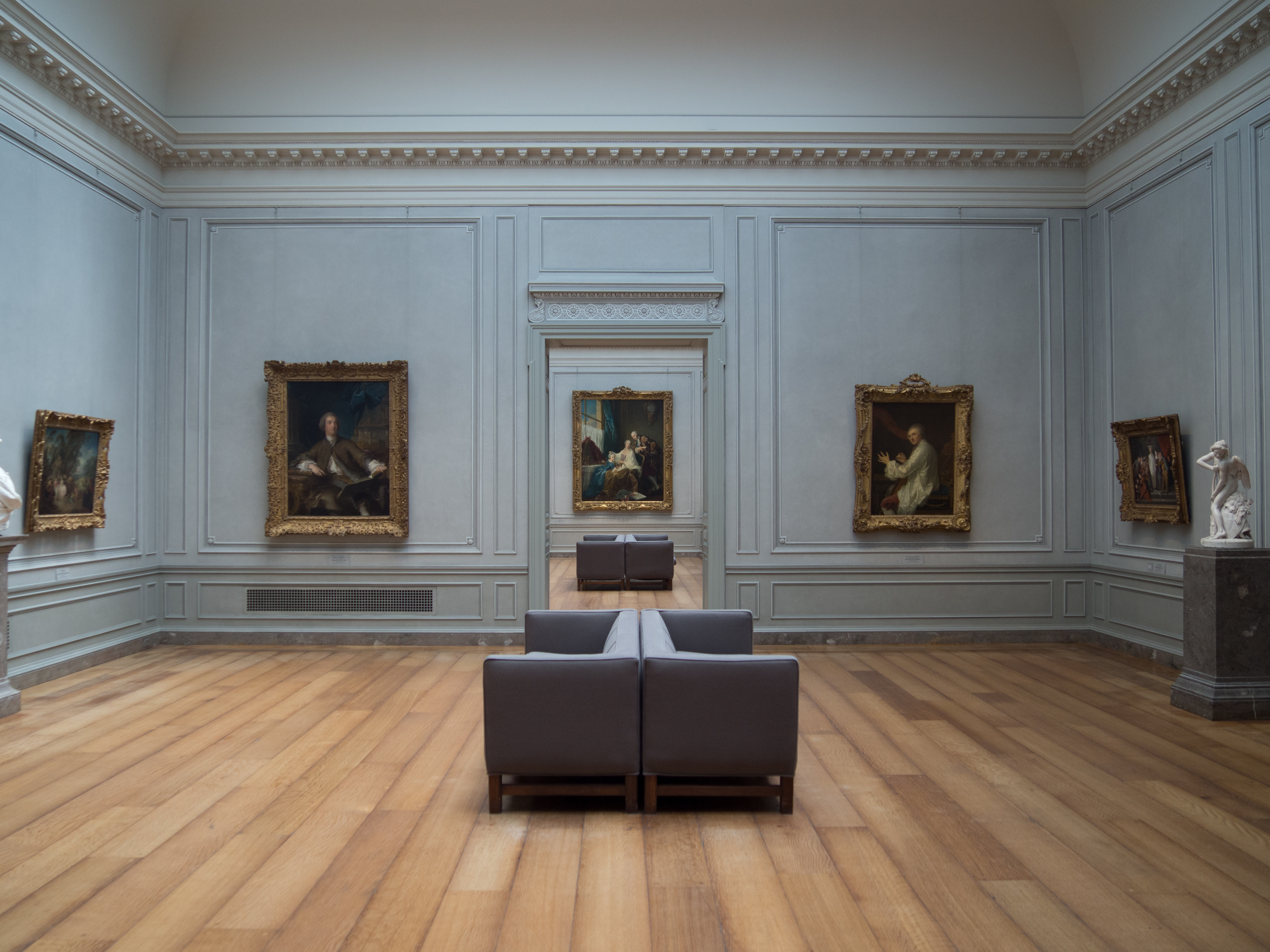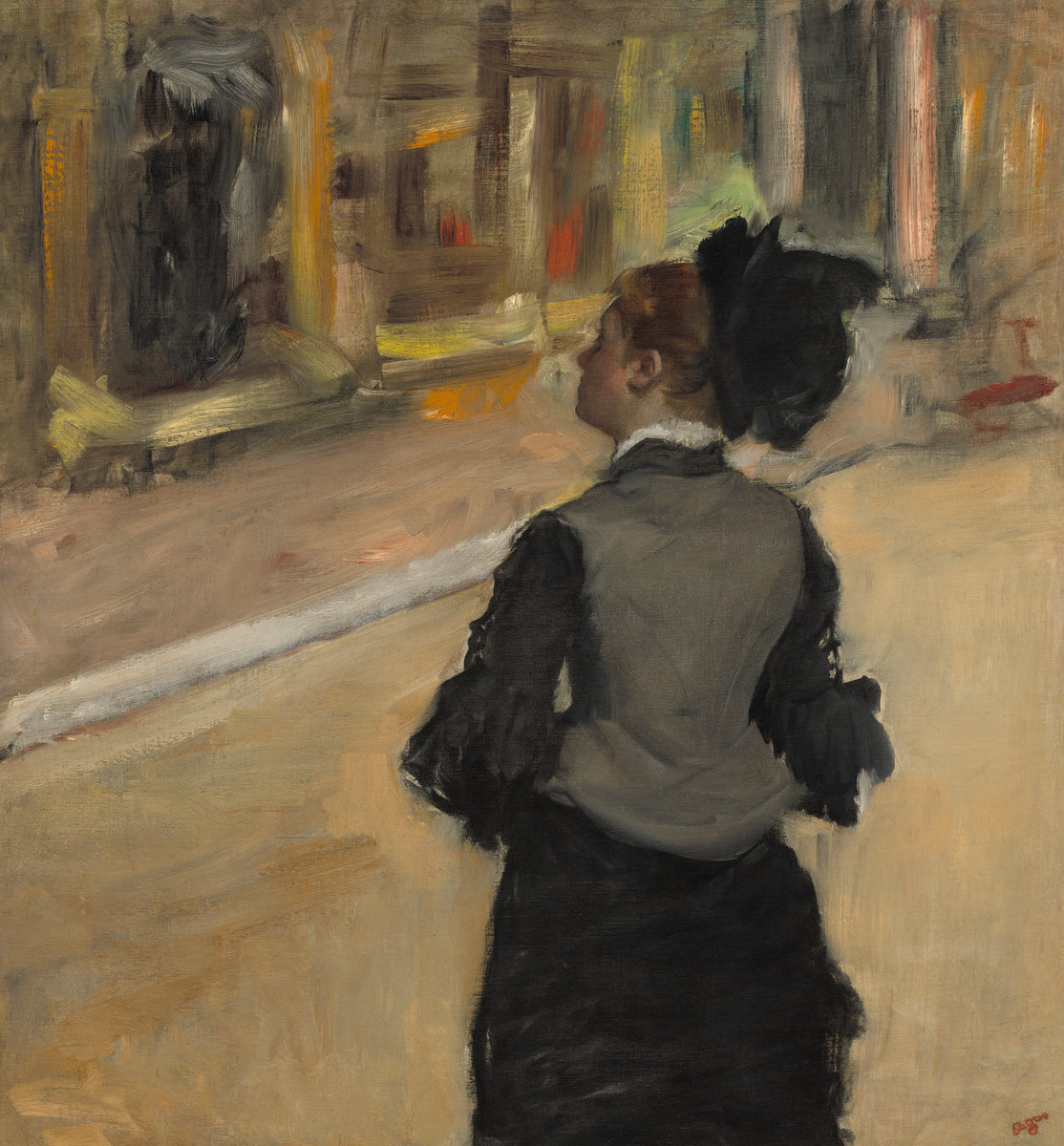Museum Head: the condition of fatigue and overwhelm that makes it difficult to appreciate art once condition has set it. Often occurs after seeing too many works of art in a limited amount of time.
Going to an art museum can be exhausting. You start out bright-eyed and eager, but by the twentieth amazing-masterpiece-with-a-two-paragraph placard, your energy will start to flag.
When we first started going to art museums, we would just sort of start haphazardly looking at things, without any real plan, foolishly thinking we’d be able to see most if not all of the place if we just kept going. This was not a good approach, as it often meant that we saw random things that weren’t that interesting and missed out on the good stuff. (It has, however, meant that we know an awful lot about pre-1500 art. It’s not great, In case you’re wondering.)
Now that we’ve been to many more museums, particularly ones that are so extensive they could take years to really see and appreciate, we’ve developed a more strategic approach. Even though we see far fewer pieces and only a portion of each museum, we find that it’s a much more rewarding experience. It doesn’t hurt that it gives us an excuse to return to that museum in the future, too! Here are our top tips for avoiding Museum Head and finding something you can personally connect with at any art museum, large or small.
Go when you’re fresh, ideally as soon as the museum opens, and limit yourself to one museum per day.
You’ll enjoy the art much more if you haven’t just seen a bunch of other tourist attractions. It’s worth making the museum your first activity. It’s sometimes feasible to do another activity in the same day, and outdoor attractions can be a nice counterbalance. It is generally a bad idea to try to go to two art museums in one day, as you will max out at some point and will feel that much more conscious of all the works you weren’t able to see and/or appreciate. A cathedral can be a nice second activity, as long as it doesn’t involve a lot of art as well.
Accept that you can’t see everything.
There are a few museums that are small enough that you could conceivably see everything, in the sense of literally putting your eyes on each work. Those museums are rare, though, and even in those cases, you’re better off going in with the idea that you won’t see everything. This forces you to prioritize and identify what you’re most interested in so that you make sure to at least see the things that are most meaningful to you.
Download the app (if there is one), and get the audio guide.
Even in museums that have good placards in English (which is not all of them!), it’s often hard to get close enough to read them if the museum is crowded. You also lose a bit of the impact of the work if you are six inches away from the side of it, squinting at the text. Standing further back while listening to the key points about a work is a better way to engage with the art. It’s worth the $5 or so to get the audio guide so that you can learn about the art.
Apps can be helpful for further detail about a work that might not be one of the highlights in the audioguide, and they often have links for furthering your learning. The other nice part about apps is that you can review them before and after your visit. This can be handy if you go to another museum with works by that same artist or in that genre, or if you are worried that you’ll forget what you saw.
If the museum has a pamphlet with highlights, be sure to grab that along with a map so you can strategize your approach.
Check to see what the current exhibitions are, and decide whether you are interested in any of them.
Special exhibitions are an excellent way to learn more about art. They usually build upon strengths of the museum’s collection, and the works from other museums are very purposefully chosen. Museum collections are assembled over time and don’t always reflect a consistent purpose or focus, but exhibitions give curators the luxury of choosing the works that “make sense” for their chosen approach or theme. You get to see works hanging next to each other in a way they aren’t ordinarily available, and the theme of the exhibition can teach you a lot about art. It’s almost always a good idea to prioritize the special exhibition(s) when you visit an art museum, unless the focus is on something you know you aren’t interested in or just really esoteric.
Decide what to focus on, before you start looking at anything.
Once you’ve decided whether or not to look at the current exhibits, decide what else you want to see. There are a lot of ways you can prioritize your museum visit, depending on your prior art knowledge, the time available, and your particular interests. We recommend choosing one of the following:
- Special exhibits, plus perhaps a few of the museum’s highlights or marquee pieces
- The museum’s particular strong point or area of focus
- An artist you are already familiar with and like
- An art period that you like or are interested in learning more about
- The highlights for the museum, often provided at the information desk and in tour books for that city
Once you’ve chosen your strategy, figure out where in the museum that type of art is, and go there first, even though you will be passing by all kinds of masterpieces along the way. Don’t stop and look! Therein lies the path to Museum Head. If time and energy permit, you can come back to those pieces.
Take a break (or two) while you’re there.
When you have limited time in a city and even more limited time for a great art museum, there is a temptation to just “power through” and try to see as many works as possible. This really takes away from the experience, though. We have found that taking a break is a great way to refresh both physically and mentally, and the twenty minutes taken for a break result in the ability to enjoy several more hours at the museum.
Café breaks can be great because having a little coffee and maybe a snack can really revive you, but if you have the option to sit outside and still reenter the museum without having to pay again, that is probably your best bet. When you sit down, you’ll realize how surprisingly tired you are – standing in front of paintings is physically more demanding than walking! The quick rest and rejuvenation will help you get a second (or third) wind for the rest of your visit.
Process what you’ve seen.
During your break and after the museum, it’s good to try to articulate what it is you are taking from the experience. If you have a travel buddy, this is a good topic for discussion at dinner that evening. What struck you during your time at the museum? Did anything surprise you? If so, why? What did you learn, and what did you like and not like? With art, everything is subjective, so there are no wrong or right answers, just your own perspective.
Use the experience to enhance your next museum visit.
The next art museum you visit will feel different based on what you saw at this museum. Maybe you found a new favorite artist. Maybe you have developed strong opinions on how museums are organized and whether they are “novice-friendly.”
Build upon what you learned, about art and about yourself, the next time you go to a museum. Be forewarned, though: this can become more and more consuming, and it will get harder and harder spend just a few hours at a museum. We are not responsible for any resulting increases in your travel budget needs. ☺

